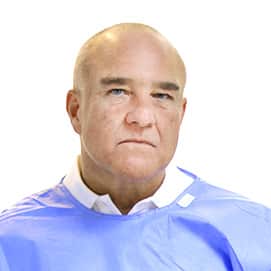About the program
“Your body post-covid” is a comprehensive examination of the body after a coronavirus infection. Diagnostics is aimed at identifying complications after coronavirus. In addition, our comprehensive program also allows you to assess the condition and function of all vital body systems.
Based on the results of the diagnosis, you will receive recommendations for rehabilitation after covid, as well as clinically confirmed prescriptions for minimizing the subsequent risks of contracting COVID-19. If complications are found, corrective therapy will be prescribed in accordance with the recommendations of the Association of Scientific Medical Societies in Germany.
Program "Your body post-covid"
- clinical blood test with leukocyte formula
- biochemical blood test (liver and kidney tests, carbohydrate and lipid metabolism, proteins and protein fractions, electrolytes, blood clotting parameters)
- blood test for thyroid hormones (to assess its function)
- blood test for pancreatic hormones (for the diagnosis of diabetes mellitus at the preclinical stage, as well as diseases of the pancreas)
- for men: test for prostate specific antigen (PSA)secreted by cells of the prostate gland (to diagnose prostate cancer and monitor the treatment of existing prostate disease)
What is this?
A method for studying the function of external respiration, including the measurement of lung volumes, as well as speed indicators of pulmonary ventilation.
For what?
Used to assess the functional state of the respiratory system.
What is this?
Non-invasive study by ultrasound diagnostics of all structures of the heart in the process of its work.
For what?
Using this method, the wall thickness, the volume of the heart cavities, the condition and functioning of the valvular apparatus, the contractile function of the heart muscle are determined, intracardiac hemodynamics, blood flow parameters in the heart chambers are examined, intracardiac thrombi, neoplasms, heart aneurysm, heart defects are detected.
What is this?
ECG recording during exercise on the heart.
For what?
Serves to determine exercise tolerance, detect coronary heart disease in the early stages and heart rhythm disturbances diagnosed only during exercise.
What is this?
A combination of ultrasound diagnostics and color coding of moving blood with a two-dimensional image of the lumen and vessel walls.
For what?
Ultrasound and DS of extracranial and intracranial vessels helps to identify obstructions to blood flow, arterial and venous aneurysms, occlusion of the vessels of the base of the brain and vertebral artery, to assess the degree of stenosis of the carotid arteries and atherosclerotic lesions, to determine the spasm of the cerebral arteries.
UZDG and DS neck vessels is carried out to assess the condition of the walls of blood vessels and analyze blood flow. Thus, the thickness of the internal vascular wall is determined, circulatory disorders in the carotid arteries, zones of thrombosis or vascular compression, as well as the presence of atherosclerotic deposits are detected.
What is this?
A non-invasive method for obtaining images of internal organs using ultrasound.
For what?
Ultrasound of the thyroid gland and soft tissues of the neck allows you to reliably judge the state and size of the thyroid gland and identify areas of heterogeneity in its tissues. The results of the examination indicate the presence or absence of nodular pathology of the thyroid gland, cysts, inflammation.
Ultrasound examination (ultrasound) of the kidneys and adrenal glands
Ultrasound of the kidneys allows you to determine their position, size, contours, structure of the parenchyma,
assess the state of structures adjacent to the kidneys, including vessels, and perirenal
space, With the help of this examination, the presence of
atherosclerotic deposits, urolithiasis, cysts, hydronephrosis, tumors, and
also an anomaly in the development of the kidneys.
Ultrasound of the adrenal glands can detect hyperplasia, cysts, benign and
malignant tumors.
Ultrasound examination (ultrasound) of the genitourinary system
Ultrasound of the genitourinary system (in men) is performed to diagnose the condition
kidneys, adrenal glands, bladder and prostate in order to identify inflammatory
processes, benign and malignant tumors, cysts, hyperplasia and other
pathologies, as well as to determine the causes of urination disorders, incontinence
urine, decreased potency.
According to indications, it is possible to carry out additional individual procedures:
What is this?
The method of layer-by-layer examination of internal organs and tissues, based on
using the capabilities of x-ray technology and a computer. Computer
the program analyzes the degree of absorption of x-rays and reconstructs
examined organs and tissues in a three-dimensional image.
For what?
Chest CT can diagnose diseases of the lungs, heart, esophagus,
large blood vessels (aorta, pulmonary artery), soft tissue damage
the central part of the chest. This survey can detect
infectious diseases (tuberculosis, pneumonia, pleurisy, etc.), lung cancer or
metastases from other organs, emphysema and bronchiectasis, pulmonary embolism and aneurysm
aorta, mediastinal pathology.
CT of the heart is used to determine the presence and extent of atherosclerosis,
cholesterol deposits in the coronary vessels of the heart and heart attack risk assessment
myocardium.
What is this?
Imaging method of internal organs and soft tissues based on exposure
magnetic field on the human body at the molecular level. Computer fixes
response of the body to this effect and interprets it in the form of a clear
layer-by-layer image of internal organs and soft tissues of the body.
For what?
MRI is performed to diagnose diseases at an early stage. Advantage
of this method of examination lies in the fact that the patient is not exposed to
X-ray exposure, while the quality of diagnosis is not reduced.
MRI of the whole body makes it possible to detect hidden foci of diseases in the body
different (often unexpected) localizations, as well as to conduct an accurate analysis of the likely
painful changes in the head, neck, spine, chest and
abdominal cavity, pelvis and hip joints. The method is indispensable for express
diagnostics as part of a preventive examination of the body.
What is this?
Method for obtaining a three-dimensional image of the main and peripheral vessels with
intravenous administration of contrast agents.
For what?
MRA is used to detect congenital abnormalities of the blood vessels,
atherosclerotic deposits, areas of narrowing and blockage of arteries, consequences
stroke, as well as the diagnosis and subsequent choice of methods for treating diseases
blood vessels.
What is this?
Imaging method of internal organs and soft tissues based on exposure
magnetic field on the human body at the molecular level. Computer fixes
response of the body to this effect and interprets it in the form of a clear
layer-by-layer image of internal organs and soft tissues of the body.
For what?
MRI is performed to diagnose diseases at an early stage. Advantage
of this method of examination lies in the fact that the patient is not exposed to
X-ray exposure, while the quality of diagnosis is not reduced.
MRI of the head includes examination of the diencephalon and medulla oblongata,
pituitary gland, epiphysis, cerebellum, cerebral hemispheres, its membranes,
vessels, ventricles, cerebrospinal fluid pathways, as well as the skull, ENT organs and
contents of the eye sockets, This method is especially effective in identifying
benign and malignant tumors, metastases, foci of infection,
vascular disorders, atherosclerotic plaques, aneurysms, cysts. In addition, with his
with the help of detecting diseases in the area of the eye orbits, paranasal sinuses,
nasopharynx.
Duration: 1-2 days














